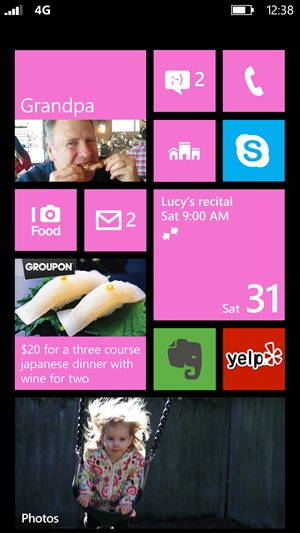Ready to develop for Windows Phone 8?
 Windows Phone 8 launched this week, so how can you build apps for the latest phones?
Windows Phone 8 launched this week, so how can you build apps for the latest phones?
Windows Phone 8 was launched Monday and the reviews are in. If you haven’t seen it yet, the Windows Phone website is a great place to see what’s new for the phone user.
For the Windows Phone developer, the Windows Phone SDK 8.0 is available now. I just wanted to give you a heads up on what you need to know to start developing for Windows Phone 8. I’ll cover:
- Where do I get the SDK so I can build Windows Phone 8 apps?
- What’s in the SDK?
- What are the system requirements for the SDK? (hint: Windows 8 with Hyper-V enabled)
- What new APIs and features can I leverage?
- If I am building an app with the Windows Phone 7 SDK do I have to restart it?
Where do I get the SDK so I can build Windows Phone 8 apps?
Download it here. (TIP: Don’t forget to register for developer movement to get rewards for your apps!)
What’s in the SDK?
The SDK includes Visual Studio 2012 Express for Windows Phone, or will work as an add-in to Visual Studio 2012 Professional, Premium, or Ultimate (TIP: As a student you can those higher editions of Visual Studio for free from DreamSpark!).
The SDK also includes emulators. So if you install the SDK you have everything you need to develop, test and deploy your Windows Phone 8 application. (TIP: As a student you can even get your Windows Phone Store account for free)
What are the system requirements for the SDK?
Here are the system requirements for the Windows Phone 8 SDK
- Supported operating systems: Windows 8, Windows 8 Pro, Windows 8 64-bit (x64) client versions
- Hardware: 4 GB of free hard disk space, 4 GB RAM, 64-bit (x64) CPU
- Windows Phone 8 Emulator: Windows 8 Pro edition or greater, a processor that supports Second Level Address Translation (SLAT)
If you have already been developing for Windows Phone 7,note the new requirement: You need to be running a 64 bit Windows 8 OS to install the Windows Phone 8 SDK.
If you don’t meet the requirements for the Windows Phone 8 Emulator, the Windows Phone SDK 8.0 will install and run but the Windows Phone 8 Emulator will not function and you will not be able to deploy or test apps on the Emulator.
The emulator uses Hyper-V so if you try to run a project in the emulator and Hyper-V is not enabled, you will be prompted to turn on Hyper-V. Turning on Hyper-V will require you to restart your computer.
What new APIs and features can I leverage?
If you visit the Windows Phone Dev Center you’ll find all documentation and samples for the Windows Phone 8 SDK. I’ll mention a couple of new features here just to whet your appetite
- The Wallet feature for collecting coupons, credit cards, memberships, and loyalty cards, managing payments for the app and music store and in some markets NFC for contactless transactions.
- Direct 3D apps and Native C++ Game Development
- Enhanced localization support (easier to handle multilingual apps)
- New Tile sizes and templates
- Use your app as the lock screen background image provider
- New Map Control
- Write an app that requests driving or walking directions
- New speech features to help users interact with your app through voice
If I am building an app with the Windows Phone 7 SDK do I have to restart it?
No. Apps built for Windows Phone 7.5 still run on Windows Phone 8, so finish and publish that app you are working on! Then if you want to leverage some of the new Windows 8 features, you can do that in your next release. (TIP: Don’t forget to register for developer movement to get rewards for your apps!)
Windows Phone 8 Designed for each of us, now what app will you put out there for each of us?